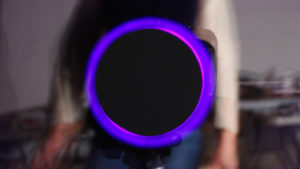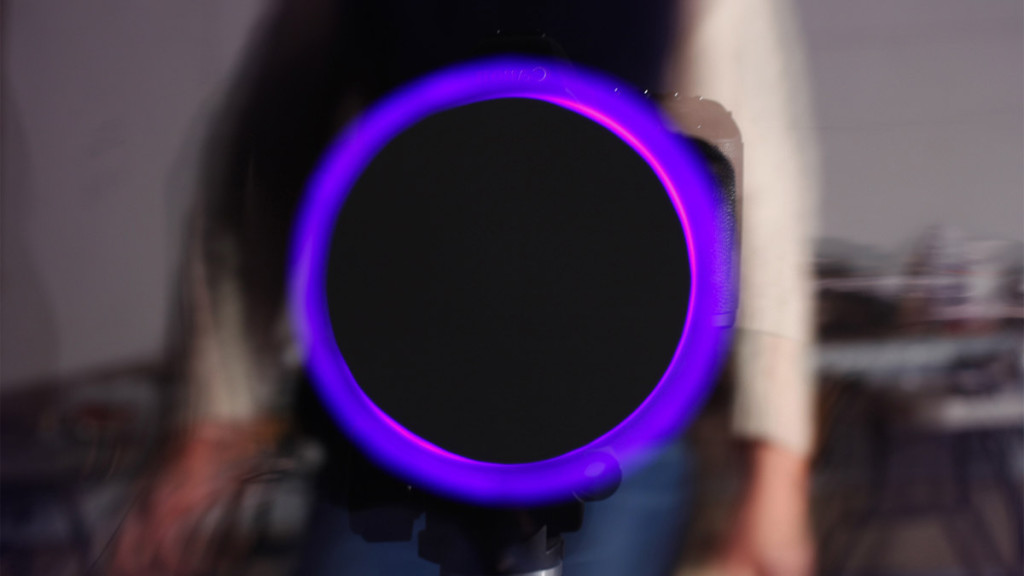Erin Shirreff’s work (Kelowna, Canada, 1975, lives and works in New York), presented for the first time in Italy in the Salone Banca di Bologna at Palazzo De’ Toschi by the curator Simone Menegoi, makes use of disparate materials and techniques (video, photography and sculpture) to investigate the ways in which we perceive objects in relation to a time and a space increasingly conditioned by media filters. She considers sculpture the starting point to test the ability of a form to be inserted in a real, virtual or photographed space and to detect how its meaning and its structure change in the translation between different means of expression. Therefore, many of the sculptures that the artist creates in the laboratory are made only to be filmed or photographed, while those that are exposed often work more as an image than as three-dimensional objects. So Shirreff adopts artisanal and manual procedures in the construction of objects endowed with precise physical properties to materialize mental prototypes whose possibilities of existence are subsequently probed and multiplied through video and photography.
In Bologna, the artist projects in a sumptuous site-specific setting the Son video (2018), an animated feature film generated by the editing without audio of still and moving images found on the net or expressly recreated in the studio. The initial idea, triggered by a first inspection in preparation for the exhibition, is the vision of a large circle floating in space, a visual suggestion that in the process of being merged with the memory of the total eclipse of the sun last year occurred in the United States in August. The video, which expands to exasperation the few minutes in which during a real eclipse the moon completely darkens the sun, frames a large black circular shape surrounded by a bright halo that in transition from one frame to another gradually changes identity, passing from an interstellar setting to a domestic interior.
The sequence of images flows slowly with short and sudden accelerations and plunges the viewer into a totalizing chromatic experience in which every previous spatial and temporal reference is absorbed and canceled by the monumental eloquence of color and light. The motionless motor of the action is the central circle, which while still maintaining the same location and size in relation to the screen, appears alternately as a translucent sphere, a disquieting black hole, a planet flooded with sidereal lights, a geometrical incorporeal shape, an imperfect cropping of fragile materials or a clogged lens. Its presence, which explores the different ranges of transparency of the dark until it approaches absolute black, partially obscures the vision of what happens in the background, already difficult to decipher because of the blurring set. You are never totally sure what you are really looking at, if an intangible mental layer identified by digital pixels, a stellar matter magnified by a telescopic or a rough surface of which a grazing light emphasizes the grain. In some shots, the image blends with its context, while at other times the variations in light and form that take place in the portion of space behind seem to allude to a dimension completely unrelated to the central shape.
These continuous slips between plans of realities, that never seem to find a definitive conciliation, express the real dissonance between the cosmic scale to which the astronomical event that inspired the work refers and its reflection in the physically practicable everyday life. On the one hand then Shireff offers the observer the opportunity to directly experience an event that in nature exceeds human physical limits through its illusionistic reproduction, on the other she emphasizes the relationship difficulty between a sentient subject and an always inevitably mediated context highlighting the artificiality of the objects she puts on stage. The process thus extends on a cosmic scale the reflections, which have always directed her creative path, on the different degree of reality that representation can convey by suggesting how the truth of an object resides in the intersection of its possible analogue surrogates. These speculative considerations in her work are then enlivened by a spontaneous attraction for the beauty of form and color and by a subtle predisposition to divertissement, which emerges in the conscious overlap between ordinary, sublime or surreal atmospheres that the same starting image can generate.
The installation Many Moons (2018) presents a group of receptacles blackened (or eclipsed) by a dark patina: the sculptures, made from the plaster cast of their internal void, constitute the color and space negative of a still life, while the circular outline of the lights that illuminate them as if they were the subjects of a photographic set recalls by contrast the black circle of the movie. The composition, a perhaps a too obvious tribute to the Giorgio Morandi’s metaphysics of the objects, still allows to deepen the operational process of the Canadian artist and to better understand the creative phases that precede the realization of her videos.
Info:
ERIN SHIRREFF
curated by Simone Menegoi
February 2 – March 4 2018
Salone Banca di Bologna di Palazzo De’ Toschi
Piazza Minghetti 4/D, Bologna
 Erin Shirreff, Son, 2018. Color video, silent, loop © Erin Shirreff
Erin Shirreff, Son, 2018. Color video, silent, loop © Erin Shirreff
 Erin Shirreff, Son, 2018. Color video, silent, loop © Erin Shirreff
Erin Shirreff, Son, 2018. Color video, silent, loop © Erin Shirreff
 Erin Shirreff, Son, 2018. Color video, silent, loop © Erin Shirreff
Erin Shirreff, Son, 2018. Color video, silent, loop © Erin Shirreff
 Erin Shirreff, Many Moons, 2018, Hydrostone, graphite, pigment, newspapers © Erin Shirreff
Erin Shirreff, Many Moons, 2018, Hydrostone, graphite, pigment, newspapers © Erin Shirreff
 Erin Shirreff, Many Moons, 2018, installation view at palazzo De’ Toschi, ph. Carlo Favero courtesy the Artist and Sikkema Jenkins & Co. New York
Erin Shirreff, Many Moons, 2018, installation view at palazzo De’ Toschi, ph. Carlo Favero courtesy the Artist and Sikkema Jenkins & Co. New York
Graduated in art history at DAMS in Bologna, city where she continued to live and work, she specialized in Siena with Enrico Crispolti. Curious and attentive to the becoming of the contemporary, she believes in the power of art to make life more interesting and she loves to explore its latest trends through dialogue with artists, curators and gallery owners. She considers writing a form of reasoning and analysis that reconstructs the connection between the artist’s creative path and the surrounding context.







NO COMMENT